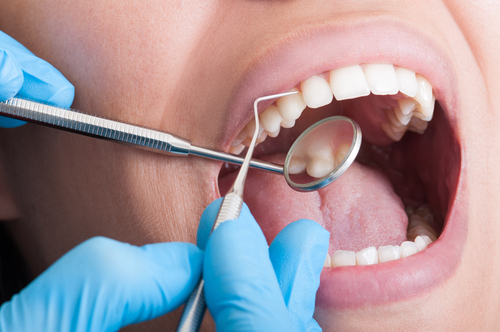Did you know that only 64% of adults will visit the dentist in a given year?
Many people associate going to the dentist with having some kind of dental problem, but routine dental care plays a key role in preventing conditions that might develop otherwise.
How often should you visit a dental hygienist? The answer depends on your dental history and your dental hygiene routine at home. Everyone should receive a cleaning from their dental hygienist every six months. But you’ve had a history of gum disease or persistent dental caries, you will probably need to schedule more frequently to keep these conditions under control.
A prophylactic dental cleaning provides an in-depth level of care that you can’t perform yourself. Even if you brush and floss your teeth daily, it’s possible to develop tooth decay or gum disease that may not be perceptible at first. It’s difficult to keep teeth perfectly clean at all times—but that’s the only way to stop bacteria from wreaking havoc! A regular cleaning at the dentist helps you “reset” your mouth’s microbial environment by removing and disrupting harmful bacteria.
But how does it work, exactly?
Why Do We Have Tooth Decay?
We often think of the mouth in the same way it looks to the naked eye: a neutral environment. But that couldn’t be further from the truth! The mouth is a microcosm of the body, a site where both good and harmful bacteria gather. Believe it or not, much of your oral health depends on the delicate balance of microorganisms. When harmful bacteria become dominant in the mouth, you become at risk for oral health problems such as tooth decay.
Dental caries are caused by a bacteria takeover, with the most common culprit being Streptococcus mutans. As the bacteria feed on decomposing food in the mouth, they produce acid as a byproduct. That acid mixes with saliva to create dental plaque—the yellow-whitish film that comes off your teeth when you floss. Plaque contains bacteria, and settles between your teeth and along the gumline.
If plaque isn’t removed while it’s still soft, it hardens into tartar. Tartar is much more difficult to remove and can damage the tooth, leading to tooth decay or inflamed gums. Eventually, it can bore holes in the tooth (cavity) or cause the gums to recede (gum disease). Going to the dentist is the only way to safely remove tartar. Your dental hygienist will use special tools to carefully remove tartar in a way that allow your teeth to stay healthy and strong.
Clearly, receiving a regular cleaning from your dental hygienist is essential for promoting oral health. Below, learn about some of the other important things that happen during your preventative visit:
1. Dental screening
Regular screening plays an important role in building long-term oral health. That includes taking dental x-rays to check for invisible cavities, screening for oral cancer, and performing a neck and head inspection. When oral health conditions are detected early, they are much easier to efficiently treat.
2. Removing plaque and tartar
 Using a scaler, the dental hygienist relies on a small mirror to guide them as they remove plaque and tartar from around the gum line and between the teeth. You might hear scraping sounds, but don’t be alarmed—that’s normal! The more tartar there is in the mouth, the more scraping they will need to do in that particular spot. If you experience discomfort, that’s not because the hygienist is doing it wrong. It means that there is a large amount of tartar, which is causing tooth sensitivity.
Using a scaler, the dental hygienist relies on a small mirror to guide them as they remove plaque and tartar from around the gum line and between the teeth. You might hear scraping sounds, but don’t be alarmed—that’s normal! The more tartar there is in the mouth, the more scraping they will need to do in that particular spot. If you experience discomfort, that’s not because the hygienist is doing it wrong. It means that there is a large amount of tartar, which is causing tooth sensitivity.
3. Gritty polish cleaning
Once the teeth are tartar-free, the hygienist will brush them with a high-powered electric brush. Often, you’ll get to choose what flavor toothpaste is used. The gritty consistency gently scrubs your teeth, providing a deep clean that removes any tartar left behind from the scaler. This polishing is safe to do twice per year when performed by a dental professional. But don’t do it at home, because you can wear down or otherwise damage the enamel.
4. Strengthening the tooth enamel
Fluoride treatment is another important aspect of your dental checkup. Fluoride is typically administered through a gel, foam, varnish, or rinse. Your dentist can provide a more thorough fluoride treatment than is possible at home with over-the-counter options. Fluoride remineralizes the enamel by depositing calcium and phosphate back into the teeth. This strengthens the teeth, making fluoride one of the most effective ways to prevent (and sometimes even reverse!) dental caries.
5. Counseling on oral care practices
After your dental cleaning, the dental hygienist will be able to make customized recommendations for your oral care. It’s easy to routinely miss the same spots, leading to plaque buildup in that area. You will learn about proper brushing and flossing techniques, as well as any additional measures you should take to ensure better oral health. That might involve using a tongue cleaner, adding mouthwash, or just slightly changing the way you brush.
Delivering Quality at Penn Dental Family Practice
A leader in oral health care, Penn Dental Family Practice provides high quality preventative and restorative dental services. Our staff is made up of experts in the field, many of whom teach the next generation of dentists at the University of Pennsylvania School of Dental Medicine. At Penn Dental, you enjoy the assurance of the best quality materials, dental technology, and care.
To schedule your appointment, please call us at 215-898-8965 or fill out this easy form for our staff to call you!


